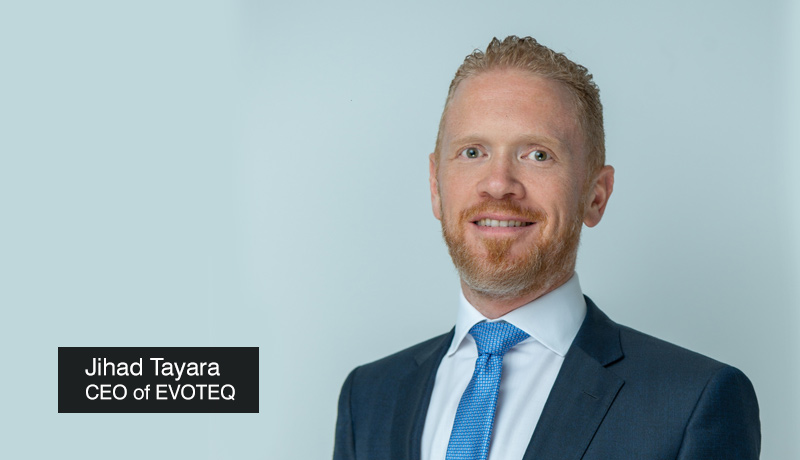
Written by Jihad Tayara, CEO of EVOTEQ
Any company, corporation, government, or country’s ability to make informed and successful decisions is critical to its growth and survival. Decision-makers and regulators can use data analytics to make sound and informed decisions today, thanks to the rapid speed of technology breakthroughs.
Data may be used by businesses to increase financial gains, improved marketing and sales methods, and strategic customer service to help them develop. Meanwhile, data-driven judgments can help government policymakers make more effective resource allocation, risk mitigation, and innovation decisions, as well as address public safety threats and concerns. For instance, it was comprehensive data gathering, research and analysis that led to the creation of vaccines for the COVID-19.
Every day, we create roughly 2.5 quintillion bytes of data. With all this data stored and accessible to everyone, how do we filter and choose information that can help us achieve our specific goals? How do we transform data to insights that deliver smarter and better decisions?
We begin with collecting, gathering and preparing the raw data. With huge amounts of data from multiple sources such as traditional databases and machines, there is a need to filter them to come up with valuable insights. As humans interact, we gather and produce data over digital media such as text and email messages, images, and videos. This form yields to unstructured data while machine-produced data are structured.
Structured data typically refers to highly organized, stored information that is efficiently and easily searchable while unstructured data is not. In many cases, to transform unstructured data to information, they need to be converted into a structured format. Compared to machines, humans are more adept and efficient at reading and extracting such data, but it requires time and energy. This is where you may need someone with a deep knowledge of data, like a data scientist, to properly manage and analyze it.
Collected data looks more like reports and they usually do not make sense. Data scientists and experts organize and interpret these jumbled raw facts for them to be valuable information. They review and filter relevant data; they analyze data and present information. They help organizations and companies simplify and manage data to solve complex problems using expertise in data management, analytics modeling, and business analysis.
Once data undergo analysis, it becomes more relevant, valuable, and reliable to assist our decision making. Such processed data is organized, consistent, accessible, meaningful and experience based. When we consolidate them, we gain deeper insights and understanding that can lead to sound decision making. We develop an understanding of problem-solving methods, insights by analyzing data and information for a given context, and we learn from other people facing the same problems. This leads to predictive analytics.
All this data, information and wisdom will help gain higher accuracy in predictive analytics. We take our past experiences, we evaluate some experience in similar situation, use information to make an educated and objective prediction. The more data, information, knowledge, and wisdom we have, the more accurate our predictions will be. In predictive analytics, we utilize machine learning as a tool for optimization and to achieve the best outcomes.
Machine learning tools use algorithms and conduct statistical analysis. In contrast, deep learning is a specialized subset of machine learning inspired by neuroscience and the working of the human brain. It has the ability to learn and perform complex tasks.
Throughout time, people have been collecting data but have not fully utilized it. Data only becomes truly useful in decision making when it goes through analytics, when it becomes meaningful, when it helps to make a decision or predict a pattern. Raw data possesses no real benefits; hence, machine learning and analytics are vital for organizations to generate real value. Within your data lies the potential to come up with new understanding of indicators or a new perspective on future patterns and thus helping us take our business, our city or our country to new directions, allowing much needed growth and improvements on all levels.